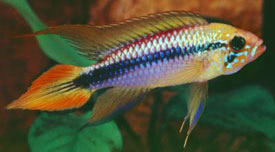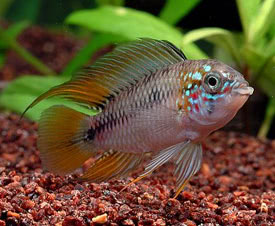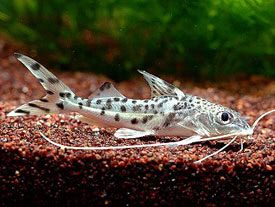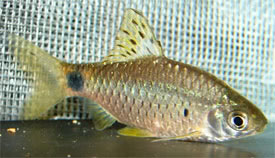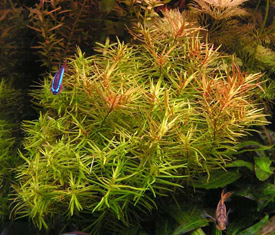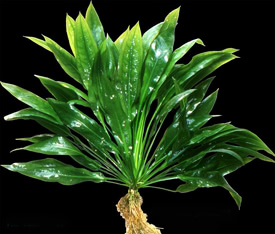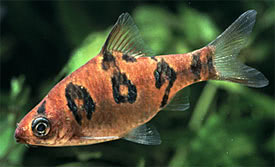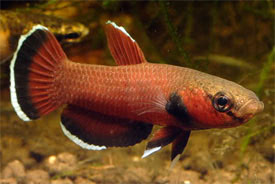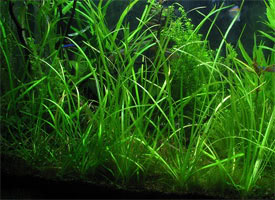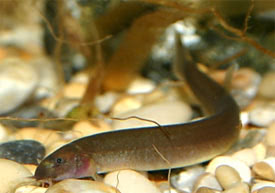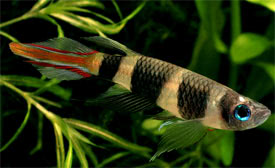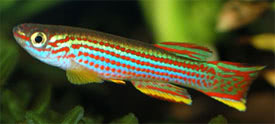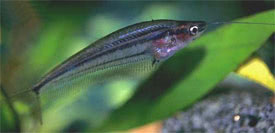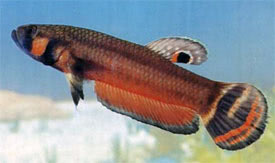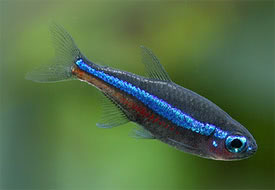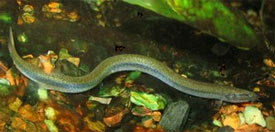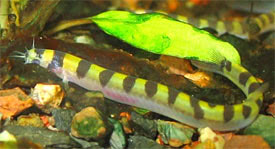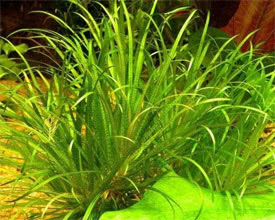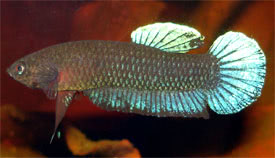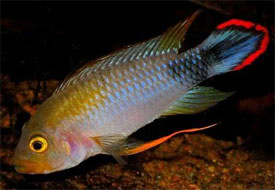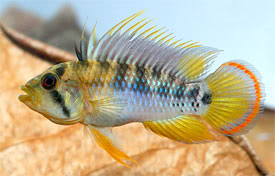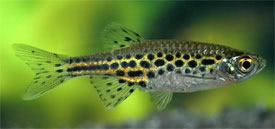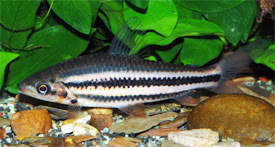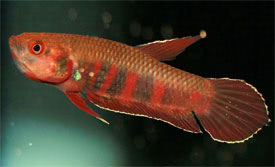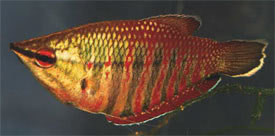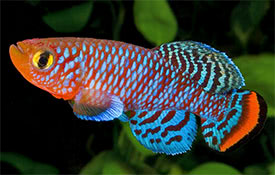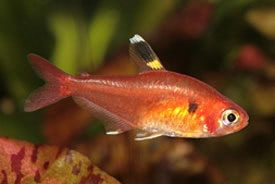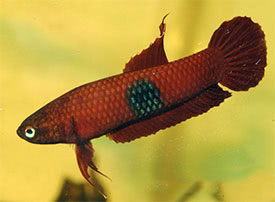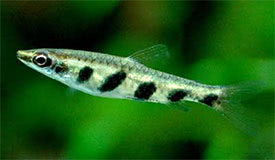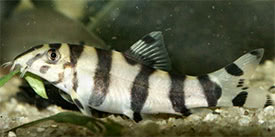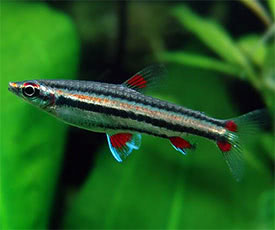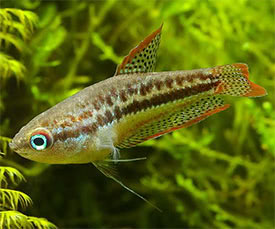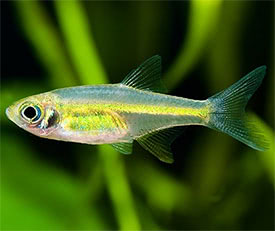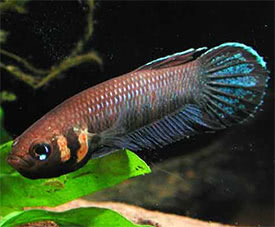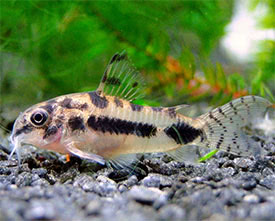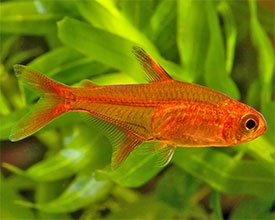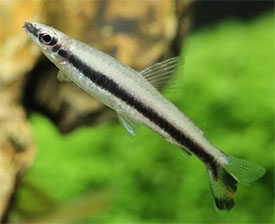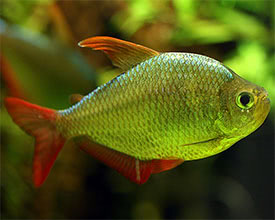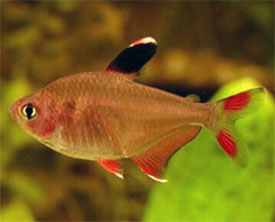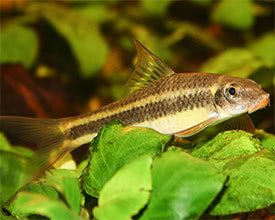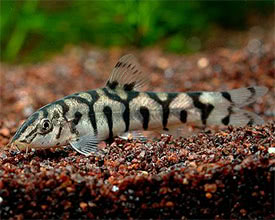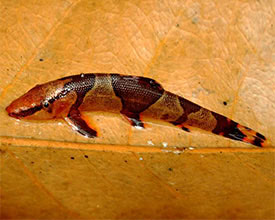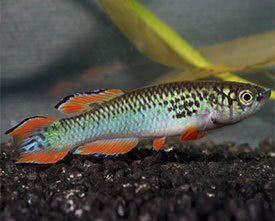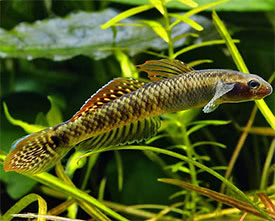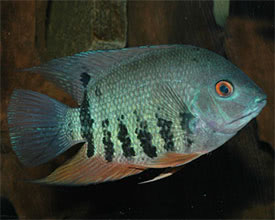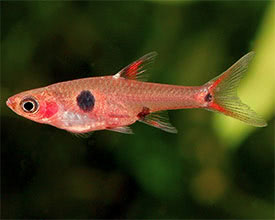
 Magyarul / Hungarian
Magyarul / Hungarian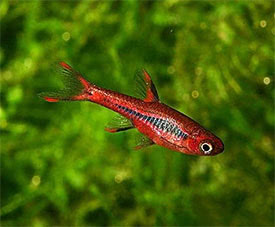
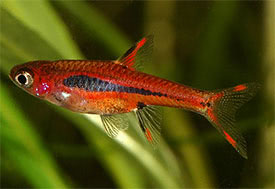
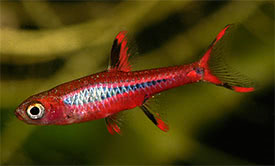
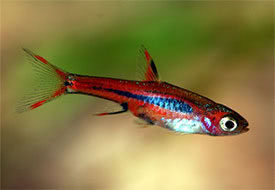


- Scientific name: Boraras brigittae
- Synonyms: Rasbora urophthalma brigittae (Vogt, 1978), Rasbora brigittae (Vogt, 1978)
- Common name: Mosquito Rasbora
- Group: Cyprinids
- Distribution: Asia; southwestern Borneo, Indonesia.
- Size: 2-2,5 cm
- Biotope: Inhabits black water streams and peat swamps, where the water is stained brown because of decomposing organic matter.
- Social behavior: A very peaceful schooling rasbora, but because of its small size it is not an ideal community fish. It is best to keep them alone or with other small species. They should be kept in a group of at least 8-10 specimens, so they become less nervous.
- Diet: Omnivorous; in nature it eats small insects and worms. In the aquarium it will accept everything: live, frozen and flake foods too, but require regular live foods to maintain their colouration.
- Breeding: Quite hard
- Tank: Minimum 30 litres
- Population: 8-10 fish for 40 litres
- Decoration: The tank should be densely-planted with subdued lighting. The substrate can be soft sand with some tree branches or roots. The addition of dried oak leaf litter further emphasises the natural feel.
- Temperature: 20-28 °C
- pH: 4.0-7.0
- Hardness: 1.0-10.0 dGH
- Lifespan: 4-8 years
Sexually mature females have rounder-bellies, while males grow a little smaller, and have more red colorations.
Like many small cyprinids this species is an egg-scatterer that exhibits no parental care after laying the eggs. The water in the breeding tank should be filtered through peat, that makes water slightly acidic. For breeding use very soft, acidic (pH 5-6,5) water with a temperature of 26-28 °C. A small 10-15 litres breeding tank can be enough, that should be decorated with fine-leaved aquarium plants, such as Ludwigia, Cryptocorine or Java Moss. When conditions are to their liking the fish should begin to spawn the following morning. The breeding pair(s) should be left in the aquarium for a couple of days as spawning should continue on a daily basis. The number of the eggs can be 50. After a few days the parents should be removed from the aquarium. The eggs hatch in 48 hours, and the larvae become free-swimming after another 24 hours. The fry can be fed with microscopic foods or powdered dry foods.
https://www.fishbase.de/summary/Boraras-brigittae.html
http://www.seriouslyfish.com/species/boraras-brigittae/
https://www.petcha.com/boraras-brigittae-is-a-stunning-little-fish/
https://www.practicalfishkeeping.co.uk/features/articles/boraras-marvels-in-miniature
































